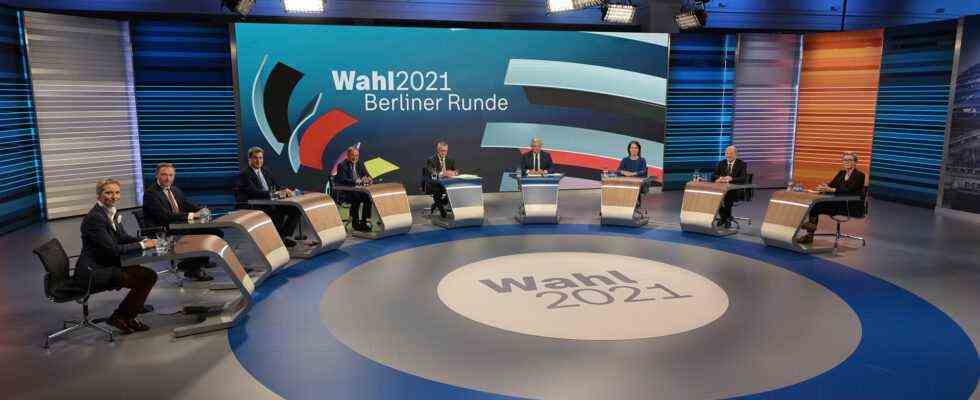Status: 09/26/2021 9:46 p.m.
After the election it is still completely open which parties will form the next government. A three-way alliance is likely – which one it will now depend mainly on the Greens and the FDP.
After the general election, it is still unclear which parties will govern Germany in the future. Mathematically, a new edition of the grand coalition would be possible – but neither the Union nor the SPD are seriously considering this option. At the moment everything points to a three-way alliance. In which constellation, however, is still open. Much could depend on the Greens and the FDP. The following coalitions are up for debate:
SPD, Greens and FDP
According to the projections, a coalition between the SPD, the Greens and the FDP would currently have a comfortable majority. In terms of content, things are looking good between the SPD and the Greens – they agree on many issues – such as the wealth tax or a loosening of the debt brake. The relationship with the FDP is difficult. It would, however, take some effort for the party to govern with the Greens and Social Democrats. Your party chairman Christian Lindner has set the goal of preventing a “left shift in politics” with higher taxes. But he does not rule out a coalition with the SPD and the Greens; the FDP would charge a very high price for it, such as the post of Federal Minister of Finance.
But there are also some substantive differences between the SPD and the Greens: SPD Chancellor candidate Olaf Scholz does not want to commit to an earlier coal exit than 2038. There is currently an example of a functioning red-green-yellow coalition at state level – in Rhineland-Palatinate.
Union, Greens and FDP
According to the current projections, black-green-yellow would also have a majority of seats in the Bundestag. In this constellation, it would be the Greens who would have to overcome a lot – between the CDU / CSU and the FDP, on the other hand, there is a lot of overlap. Union and FDP could try to slow down the Greens in their climate and social policy.
Black-green-yellow, however, is burdened with a heavy mortgage: In 2017, negotiations on such an alliance crashed because the FDP broke them at the last minute. FDP leader Lindner can hardly afford to pinch himself again, but the substantive differences with the Greens remain; especially because they also want to hold industry accountable when it comes to climate protection. However, there is an example of a functioning black-green-yellow alliance – in Schleswig-Holstein.
SPD and Union
The Union and the SPD have formed a coalition for many years – now both partners of the grand coalition are tired, even if it were mathematically possible. The SPD in particular has little inclination to reissue the unloved alliance with the Union.
However, a new grand coalition is not entirely ruled out: It could come about if the Greens and the FDP do not come to an agreement in the negotiations and an alliance with both parties does not come about.
SPD, Greens and Left
According to initial projections on the evening of the election, it is extremely unlikely that there will be enough for a coalition of the SPD, the Greens and the left. The left is even worried about entering the Bundestag. And even if an arithmetical majority were to be achieved, it would be difficult – the decisive hurdle is foreign policy: the left is opposed to NATO and the Federal Armed Forces. When it comes to social policy, health and pensions, but also tax policy, the three parties have a lot in common.

